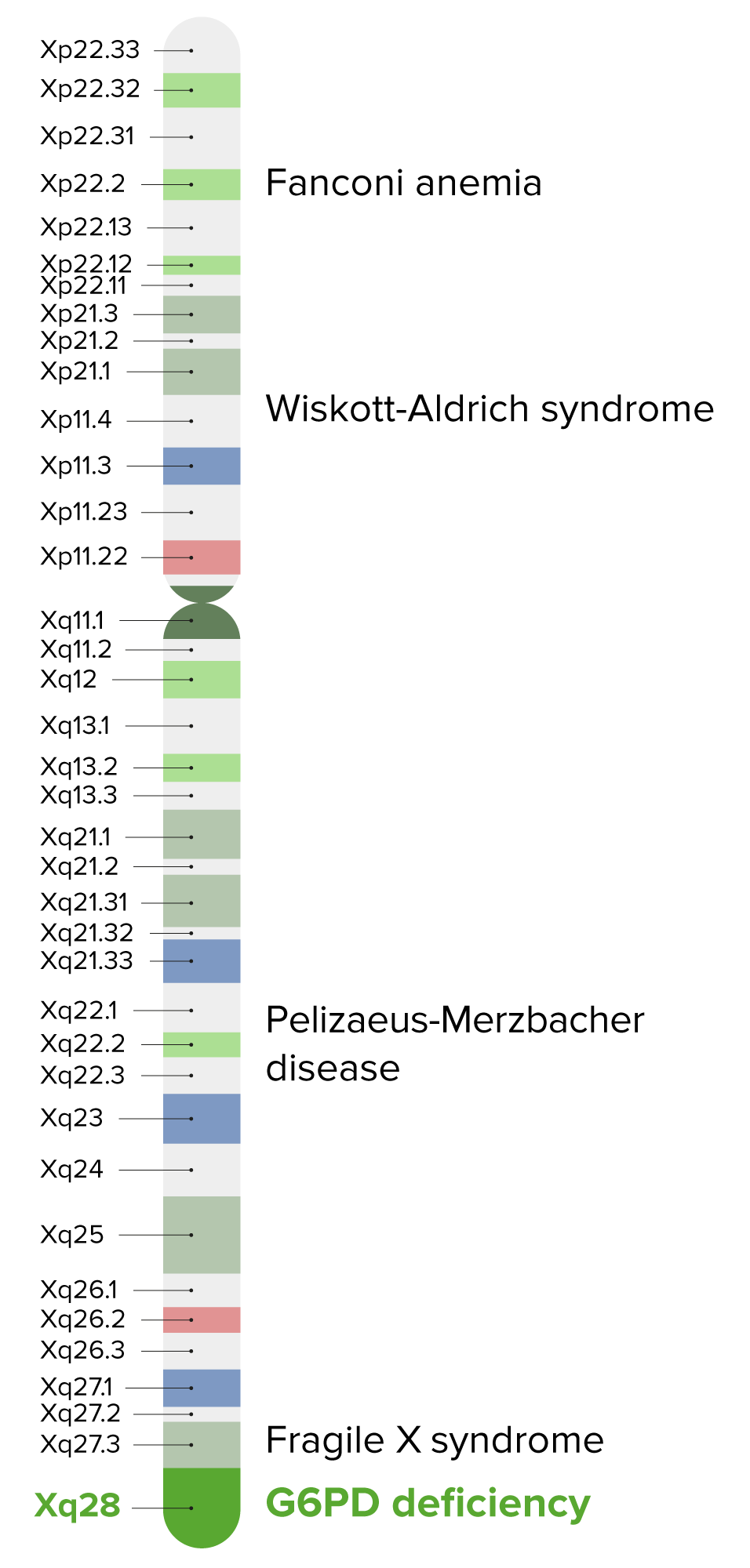Playlist
Show Playlist
Hide Playlist
G6PD Deficiency: Biochemistry of G6PD
-
Slides G6PP Deficiency.pdf
-
Reference List Pathology.pdf
-
Download Lecture Overview
00:00 Don’t let them do that to you. 00:01 Okay, so let’s take a look at our G6PD and a couple of things that are important for us. 00:06 So here, I want you to move to the left and I want you to identify glucose here. 00:11 And then this is the glycolytic pathway. 00:14 We’re going to branch off the glycolytic pathway and there’s my rate-limiting enzyme, G6PD, glucose-6-phosphate dehydrogenase. 00:22 What are you going to form? Look, you took NADP and you formed NADPH. 00:28 Where do you actually require that NADPH for? You’re going to take oxidized glutathione and you will reduce it. 00:35 Remember in biochemistry, if you reduce something, what does that mean to you? Oh, yeah, you create the active form. 00:41 So here’s my GSH, that is the reduced form of glutathione. 00:45 Ladies and gentlemen, that is what protects us. 00:49 That is what protects the RBC. 00:52 Against whom? Free radicals. 00:55 What does a free radical mean to you? Oxygen and company. 00:59 So for example, do you remember superoxides? Do you remember hydrogen peroxide? Which one are we seeing here? That’s hydrogen peroxide. 01:09 That’s a free radical. 01:10 But where did it come from? Take a look at that box. 01:13 Infections most commonly. 01:16 Doesn’t that then produce free radicals? Of course, drugs such as – Remember antimalarials. 01:22 I told you if you’re about to go to a tropical country and you’re taking antimalarials for months and months and months. 01:29 You’re introducing free radicals. 01:31 What was the name of that bean in the Mediterranean that they consume in their diet? The fava bean. 01:36 So all of these would then be introducing a free radical, that GSH, which is the glutathione. 01:43 We’ll take the free radical, hydrogen peroxide and make it into water, which is completely benign and it’s a neutralizer, isn’t it? So imagine, please, that your patient doesn’t have G6PD. 01:59 You're not going to produce NADPH. 02:01 You don’t activate glutathione. 02:02 Uh-oh, free radical damage. 02:05 What is it going to cause damage to? That hemoglobin. 02:08 What do you call that hemoglobin now? Heinz body. 02:12 Who are you going to attract? Phagocytic cell. 02:15 What do you produce? Bite cells. 02:17 What was that other thing that I told you? Not only do we have hemolytic anemia, but you also have susceptibility to infection. 02:24 What kind of organisms? Catalase-positive. 02:29 Everything that we just talked about here is what you’re seeing. 02:31 It’s all lined up, X-linked recessive. 02:35 And then the last little part that I wish to add is the part on the top, very right, and you find that if you don’t have G6PD deficiency, you end up forming your Heinz bodies. 02:45 In terms of its hemolysis, it could either intravascular or it could be extravascular, is that clear? Take a look at that arrow, where it says G6PD deficiency, that’s important. 02:55 Intra or extravascular, both instances occur. 03:03 What we’re looking at here in this picture is your Heinz body. 03:08 How does this occur? Free radical exposure, fava beans, infections, drugs. 03:14 What are you going to find next? You’re going to find bite cells.
About the Lecture
The lecture G6PD Deficiency: Biochemistry of G6PD by Carlo Raj, MD is from the course Hemolytic Anemia – Red Blood Cell Pathology (RBC).
Included Quiz Questions
Which of the following primarily protects the erythrocyte against free radical damage?
- Reduced glutathione (GSH)
- Oxidized glutathione (GSSG)
- Myeloperoxidase
- Nicotinamide adenine dinucleotide phosphate oxidase
- Hydrogen peroxide
The reduced form of nicotinamide adenine dinucleotide phosphate (NADPH) is required in which of the following conversions?
- Oxidized glutathione to reduced glutathione
- Reduced glutathione to oxidized glutathione
- Oxygen to superoxide
- Adenosine diphosphate (ADP) to adenosine monophosphate (AMP)
- Glucose 6 phosphate to 6 phosphogluconate
Glucose-6-phosphate dehydrogenase deficiency predisposes individuals to infection with which of the following types of organisms?
- Catalase positive
- Catalase negative
- Urease positive
- Coagulase negative
- Coagulase positive
Customer reviews
5,0 of 5 stars
| 5 Stars |
|
5 |
| 4 Stars |
|
0 |
| 3 Stars |
|
0 |
| 2 Stars |
|
0 |
| 1 Star |
|
0 |




